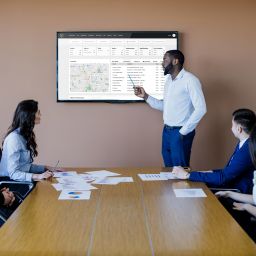How Short-Staffed Resorts Can Optimize Scheduling
We are living in the “Great American Labor Shortage.” The leisure and hospitality business experienced a 39.3% unemployment rate in 2020, which, when combined with the huge number of job openings, demonstrates how understaffed the sector is.
According to the International Travel & Tourism Council, the tourism and travel industry would face a manpower shortage of 690,000 people by 2021. Vail Resorts is one of several resort firms dealing with this issue. A lack of chairlift operators, lift engineers, and snowcat drivers has hampered the resort’s capacity to welcome skiers.
Why has COVID led to a shortage of talent?
- COVID fears: Employees are hesitant to return to work because they are afraid of contracting the virus.
- Bad management: Resort management let many staff go last year, and one of the reasons they may not be bringing anyone back is to help recover from the loss of profit during shutdowns.
- Parental caring throughout the pandemic: The COVID-19 pandemic forced the closure of a number of schools across the country. Parents who do not have access to childcare are compelled to stay at home and are unable to return to work.
To optimize scheduling while being short-staffed, you need to:
1. Use labor forecasting
Evaluate sales demand by analyzing past sales data with labor forecasting software and scheduling shifts accordingly. You’ll be able to intelligently schedule your limited manpower to fulfil sales demand. For example, when sales are high, you may be able to schedule more experienced personnel.
Following the pandemic, sales demand is anticipated to fluctuate, and managers must guarantee that labor scheduling can rapidly change to meet sudden demand swings.
You can also predict labor demand by department and track whether, for example, more personnel should be scheduled in mountain operations vs lodging at a ski resort. For example, if a large number of people come to ski for the day but do not book hotels for the weekend, the degree of scheduled labor required will differ between the two departments.
2. Make schedules agile and adaptable
Create plans at least two weeks in advance to allow employees to indicate their need for covering in the event of unforeseen scheduling issues.
To centralise scheduling and boost your staff’s dedication to shift adherence, use employee scheduling software. You may reduce last-minute scheduling adjustments by adopting mobile technologies such as shift swaps and replacements, which increases administrative adaptability and personnel agility.
To avoid being understaffed, you must also manage leave requests in a timely manner. You don’t want too many staff going on leave at once. Discuss leave requests with each employee to avoid scheduling surprises later on. Staff employees should be encouraged to submit leave requests with at least a few days’ notice so that schedules can be planned in a timely manner.
3. Increase employee engagement
Concentrate on improving the overall employee experience. Employees that are engaged are more likely to show up, do their best work, and deliver the greatest service.
It is feasible to immediately alert staff of timely updates or critical company announcements using a centralized communication platform such as Vigilink WFM. Putting your word out there swiftly on a unified system properly engages personnel, makes them feel appreciated, and addresses challenges with unconnected contact with management.
Another strategy to boost employee engagement is to provide additional opportunities for shift feedback. Workers may feel compelled to report on many elements of their shifts, ranging from coworker cooperation to staffing concerns. The capacity to provide management feedback in this manner empowers employees and makes them feel more appreciated. Even in the face of a labor scarcity, this results in engaged and productive resort workers.
Incentives should also be provided to engage personnel and enhance morale. When employees are highly compensated, they are happier. Several restaurant and hotel operators are raising wages to attract and retain personnel. For example, an ice cream shop raised pay to $15 per hour and instantly filled all 15 open positions. According to Hotel Tech Report, increasing pay rates can reduce absenteeism and limit employee turnover, which is good news for hotels and resorts that are short-staffed.
Replicate these results and boost employee engagement by paying more during busy shifts and throughout peak season.
4. Automate breaks
Workers require breaks to avoid feeling stressed or overworked, both of which contribute to staff turnover.
With many departments and diverse needs, resort management already spends far too much time manually organizing personnel schedules – up to 12 hours per week. Low staffing levels only add to this time, bringing management even more issues. In the midst of all of these challenges, scheduling and enforcing breaks may fall through the cracks.
Use employee scheduling software that automatically applies legally compliant breaks to every employee’s schedule to solve this problem. Employees and managers should be able to easily monitor these breaks, ensuring that short-staffed teams stay well-rested and productive. When employees skip breaks, leadership should be notified, and they should be able to follow a live timeclock feed to see when and where staff are taking their breaks.
5. Cross-train employees
Teach employees to undertake a variety of duties so that they are more well-rounded and prepared to deal with manpower shortages. The easiest way to accomplish this is to encourage your employees to mentor and train one another.
Make a list of everyone on your team, including their job descriptions. Consider the expertise required for each role, and then link positions with similar skill sets. For example, you can pair wait staff with those working in the front office team, both of which deal with clients. Members of the wait staff would learn how to execute check-ins, check-outs, and make reservations, while employees of the front office would learn how to service guests at the restaurant.
If all of your employees are cross-trained and multi-functional, they will be able to cover for one another. You will be able to rotate your employees around departments to fulfil shifting consumer needs.

















